High-throughput screen of natural product libraries for hsp90 inhibitors
- PMID: 24833337
- PMCID: PMC4009755
- DOI: 10.3390/biology3010101
High-throughput screen of natural product libraries for hsp90 inhibitors
Abstract
Hsp90 has become the target of intensive investigation, as inhibition of its function has the ability to simultaneously incapacitate proteins that function in pathways that represent the six hallmarks of cancer. While a number of Hsp90 inhibitors have made it into clinical trials, a number of short-comings have been noted, such that the search continues for novel Hsp90 inhibitors with superior pharmacological properties. To identify new potential Hsp90 inhibitors, we have utilized a high-throughput assay based on measuring Hsp90-dependent refolding of thermally denatured luciferase to screen natural compound libraries. Over 4,000 compounds were screen with over 100 hits. Data mining of the literature indicated that 51 compounds had physiological effects that Hsp90 inhibitors also exhibit, and/or the ability to downregulate the expression levels of Hsp90-dependent proteins. Of these 51 compounds, seven were previously characterized as Hsp90 inhibitors. Four compounds, anthothecol, garcinol, piplartine, and rottlerin, were further characterized, and the ability of these compounds to inhibit the refolding of luciferase, and reduce the rate of growth of MCF7 breast cancer cells, correlated with their ability to suppress the Hsp90-dependent maturation of the heme-regulated eIF2α kinase, and deplete cultured cells of Hsp90-dependent client proteins. Thus, this screen has identified an additional 44 compounds with known beneficial pharmacological properties, but with unknown mechanisms of action as possible new inhibitors of the Hsp90 chaperone machine.
Figures

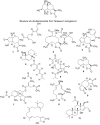
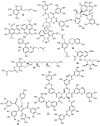
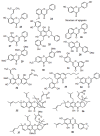



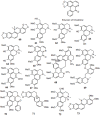
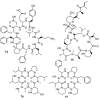
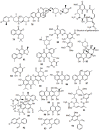




Similar articles
-
A High-Throughput Screen for Inhibitors of the Hsp90-Chaperone Machine.Methods Mol Biol. 2018;1709:87-96. doi: 10.1007/978-1-4939-7477-1_7. Methods Mol Biol. 2018. PMID: 29177653
-
Assays for identification of Hsp90 inhibitors and biochemical methods for discriminating their mechanism of action.Curr Top Med Chem. 2009;9(15):1462-78. doi: 10.2174/156802609789895692. Curr Top Med Chem. 2009. PMID: 19860729 Review.
-
Development of a high-throughput screening cancer cell-based luciferase refolding assay for identifying Hsp90 inhibitors.Assay Drug Dev Technol. 2013 Oct;11(8):478-88. doi: 10.1089/adt.2012.498. Epub 2013 Oct 15. Assay Drug Dev Technol. 2013. PMID: 24127661 Free PMC article.
-
High-throughput assay for the identification of Hsp90 inhibitors based on Hsp90-dependent refolding of firefly luciferase.Bioorg Med Chem. 2007 Mar 1;15(5):1939-46. doi: 10.1016/j.bmc.2007.01.004. Epub 2007 Jan 4. Bioorg Med Chem. 2007. PMID: 17223347 Free PMC article.
-
Natural Product Inspired N-Terminal Hsp90 Inhibitors: From Bench to Bedside?Med Res Rev. 2016 Jan;36(1):92-118. doi: 10.1002/med.21351. Epub 2015 May 25. Med Res Rev. 2016. PMID: 26010985 Free PMC article. Review.
Cited by
-
Hsp90 Inhibitors for the Treatment of Chronic Myeloid Leukemia.Leuk Res Treatment. 2015;2015:757694. doi: 10.1155/2015/757694. Epub 2015 Dec 3. Leuk Res Treatment. 2015. PMID: 26770832 Free PMC article. Review.
-
In Vitro Anticancer Activity and in Vivo Biodistribution of Rhenium(I) Tricarbonyl Aqua Complexes.J Am Chem Soc. 2017 Oct 11;139(40):14302-14314. doi: 10.1021/jacs.7b08640. Epub 2017 Sep 26. J Am Chem Soc. 2017. PMID: 28948792 Free PMC article.
-
Synthesis and Evaluation of the Tumor Cell Growth Inhibitory Potential of New Putative HSP90 Inhibitors.Molecules. 2018 Feb 13;23(2):407. doi: 10.3390/molecules23020407. Molecules. 2018. PMID: 29438315 Free PMC article.
-
Diverging Novobiocin Anti-Cancer Activity from Neuroprotective Activity through Modification of the Amide Tail.ACS Med Chem Lett. 2016 Jul 5;7(8):813-8. doi: 10.1021/acsmedchemlett.6b00224. eCollection 2016 Aug 11. ACS Med Chem Lett. 2016. PMID: 27563408 Free PMC article.
-
Development of a Cell-Based High-Throughput Screening Assay to Identify Porcine Host Defense Peptide-Inducing Compounds.J Immunol Res. 2018 Nov 19;2018:5492941. doi: 10.1155/2018/5492941. eCollection 2018. J Immunol Res. 2018. PMID: 30581875 Free PMC article.
References
-
- Whitesell L., Mimnaugh E.G., de Costa B., Myers C.E., Neckers L.M. Inhibition of heat shock protein hsp90-pp60v-Src heteroprotein complex formation by benzoquinone ansamycins: Essential role for stress proteins in oncogenic transformation. Proc. Natl. Acad. Sci. USA. 1994;91:8324–8328. - PMC - PubMed
-
- Grenert J.P., Sullivan W.P., Fadden P., Haystead T.A., Clark J., Mimnaugh E., Krutzsch H., Ochel H.J., Schulte T.W., Sausville E., et al. The amino-terminal domain of heat shock protein 90 (hsp90) that binds geldanamycin is an ATP/ADP switch domain that regulates hsp90 conformation. J. Biol. Chem. 1997;272:23843–23850. - PubMed
-
- Sharma S.V., Agatsuma T., Nakano H. Targeting of the protein chaperone, Hsp90, by the transformation suppressing agent, radicicol. Oncogene. 1998;16:2639–2645. - PubMed
-
- Schulte T.W., Akinaga S., Soga S., Sullivan W., Stensgard B., Toft D., Neckers L.M. Antibiotic radicicol binds to the N-terminal domain of Hsp90 and shares important biologic activities with geldanamycin. Cell Stress Chaperones. 1998;3:100–108. doi: 10.1379/1466-1268(1998)003<0100:ARBTTN>2.3.CO;2. - DOI - PMC - PubMed
Grants and funding
LinkOut - more resources
Full Text Sources
Other Literature Sources

